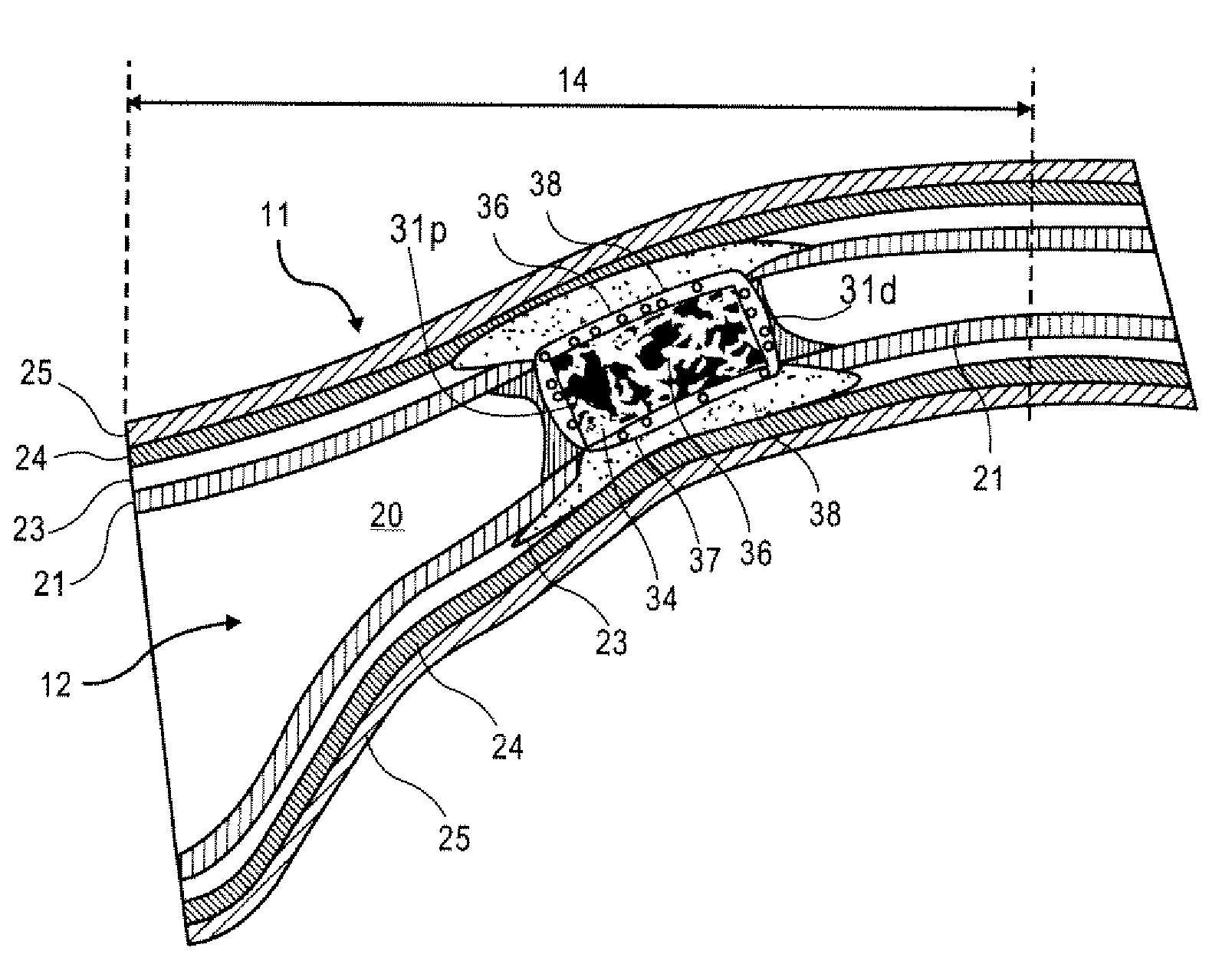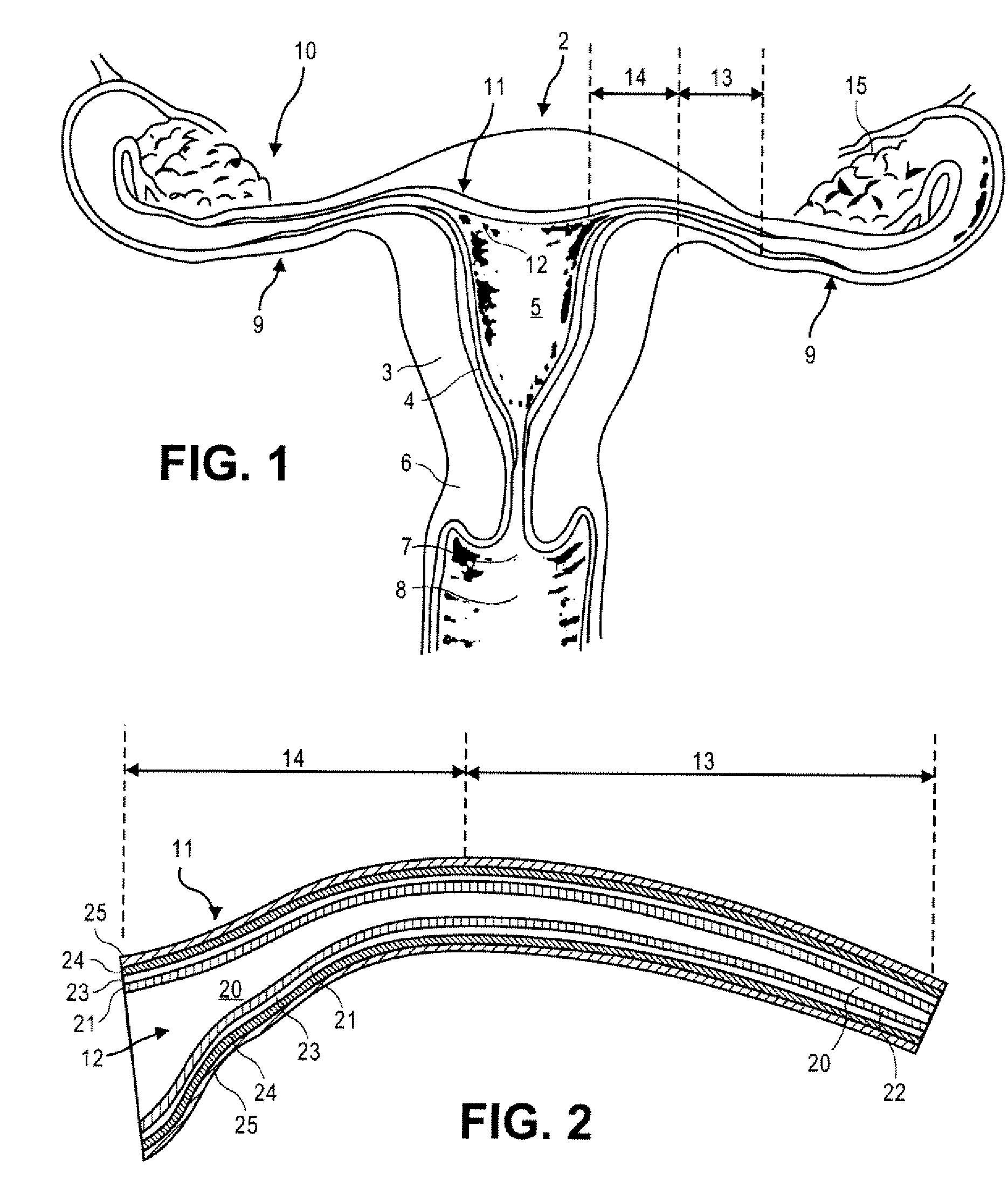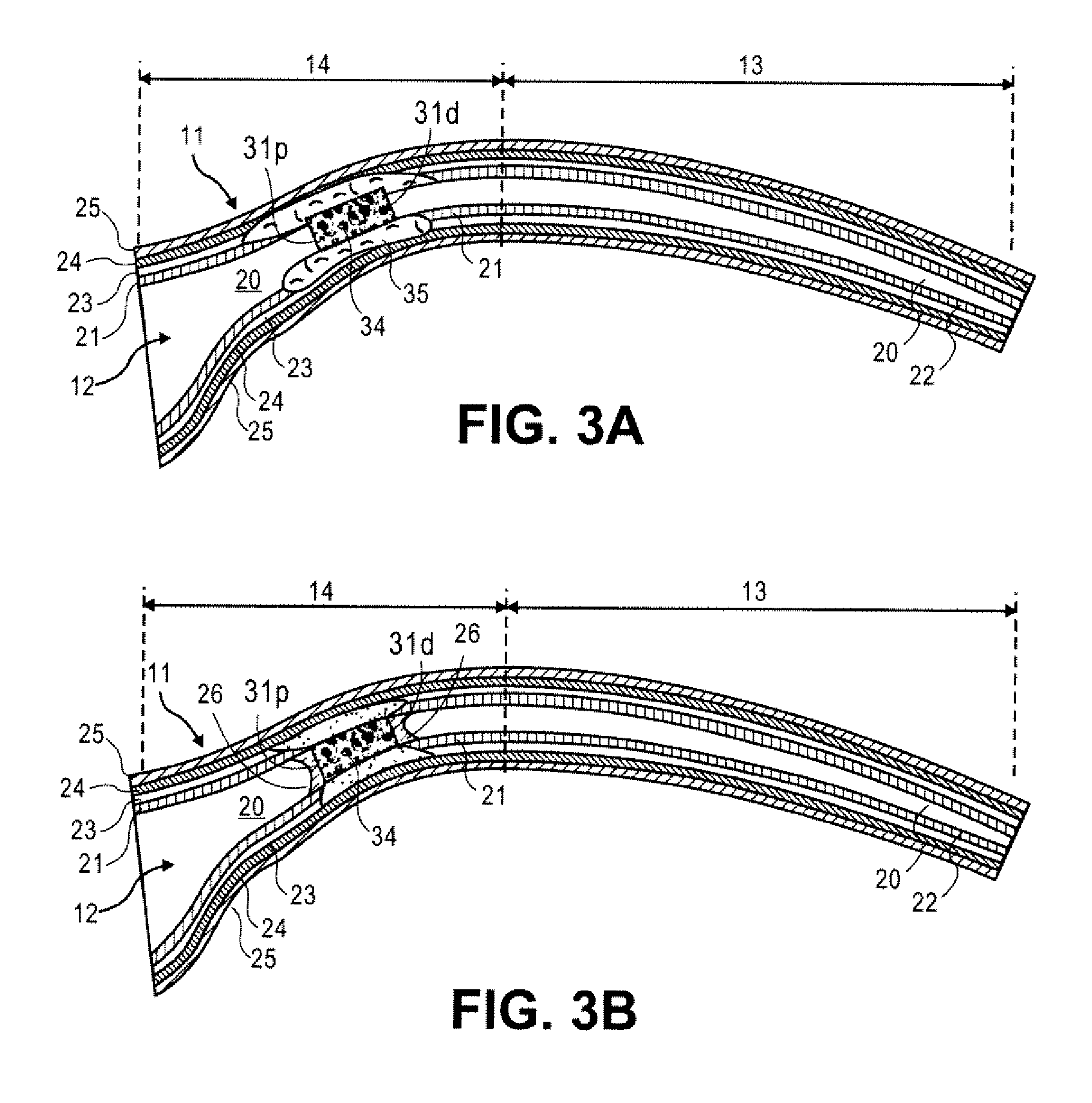Methods and devices for occluding an ovarian pathway
a technology of occlusion and ovarian vein, which is applied in the field of appendix and method for permanently closing body vessels, can solve the problems of occlusion, scar tissue creation, and scar tissue creation, and achieve the effect of avoiding occlusion, avoiding occlusion, and avoiding occlusion
- Summary
- Abstract
- Description
- Claims
- Application Information
AI Technical Summary
Benefits of technology
Problems solved by technology
Method used
Image
Examples
Embodiment Construction
[0038]Various embodiments and aspects of the inventions will be described with reference to details discussed below, and the accompanying drawings will illustrate the various embodiments. The following description and drawings are illustrative of the invention and are not to be construed as limiting the invention. Numerous specific details are described to provide a through understanding of various embodiments of the present invention. However, in certain instances, well-known or conventional details are not described in order to provide a concise discussion of embodiments of the present inventions.
[0039]FIG. 1 shows some of the major elements of the female reproductive system. The uterus 2 is an organ of the female pelvis that has the shape of a pear. It consists of a thick muscular coat, the myometrium 3, a cavity having an inner mucosal lining of variable thickness called the endometrium 4, and a cavity referred to as the uterine cavity 5. The cervix 6 defines the cervical canal ...
PUM
 Login to View More
Login to View More Abstract
Description
Claims
Application Information
 Login to View More
Login to View More - R&D
- Intellectual Property
- Life Sciences
- Materials
- Tech Scout
- Unparalleled Data Quality
- Higher Quality Content
- 60% Fewer Hallucinations
Browse by: Latest US Patents, China's latest patents, Technical Efficacy Thesaurus, Application Domain, Technology Topic, Popular Technical Reports.
© 2025 PatSnap. All rights reserved.Legal|Privacy policy|Modern Slavery Act Transparency Statement|Sitemap|About US| Contact US: help@patsnap.com



